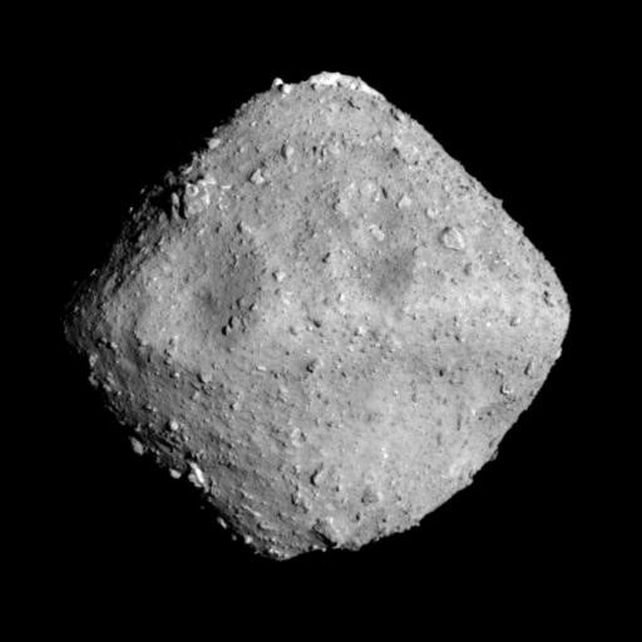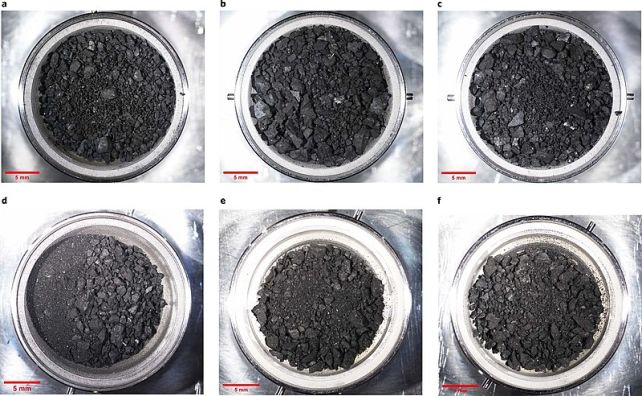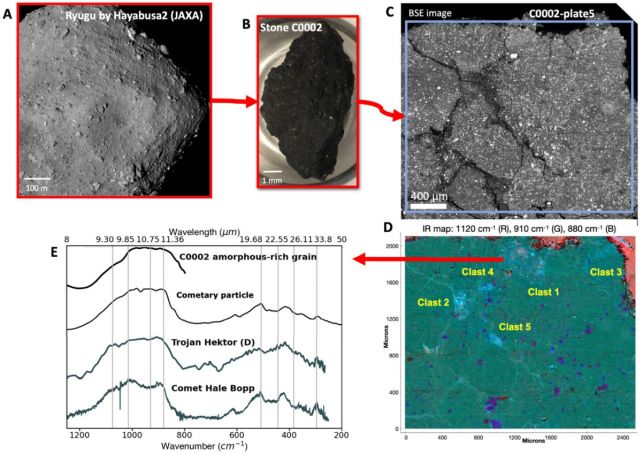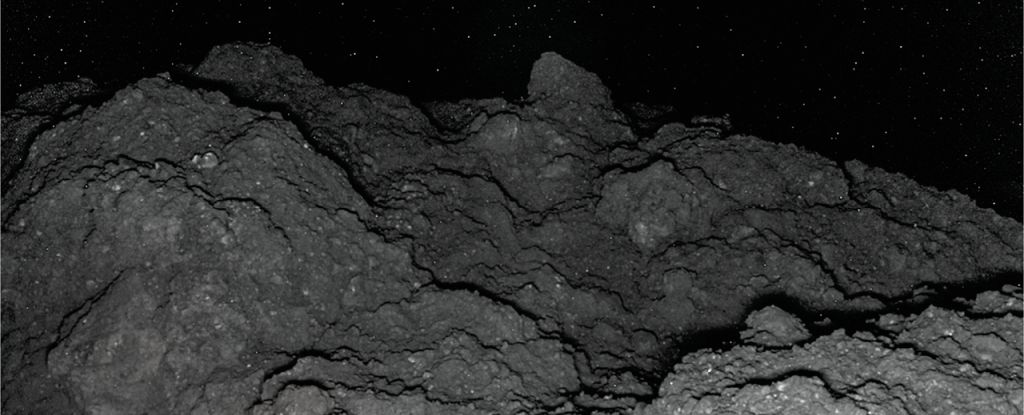Products You May Like
Ancient grains of dust are revealing the life story of a Solar System asteroid.
According to an analysis of grains collected from asteroid Ryugu, at least part of the carbon-rich rock started its life much farther from the Sun before ending up in the asteroid belt and then, ultimately, at roughly Earth’s distance from the Sun.
These findings reveal that asteroids can have complex histories involving multiple migrations through the Solar System before they end up at their current locations – and that they contain valuable records of different periods throughout the history of the Solar System.
Ryugu is an interesting, if fairly standard, chunk of space rock. It’s a C-type asteroid, the most common type, rich in carbon and water, and scattered throughout the Main Belt of asteroids in the space between Mars and Jupiter.
But Ryugu isn’t in the Main Belt. Its orbit around the Sun is very close to Earth’s, suggesting some sort of disruption that sent it out of the asteroid belt long ago.

Launched in 2014 as a sample return mission, the Japan Aerospace Exploration Agency’s (JAXA) Hayabusa2 probe surveyed Ryugu from 2018 to 2019, finally returning home in 2020. In addition to collecting samples, Hayabusa2 also discovered that the 900-meter (2,950-foot) asteroid is not one single big chunk of rock but what is called a “rubble pile“, a loose collection of smaller rocks bound together by gravity.
Ryugu has much in common with asteroid belt asteroids, particularly the Polana and Eulalia families. But a growing number of studies on the samples brought to Earth from Ryugu show that at least some of the minerals from the rubble pile are more consistent with material in the outer Solar System.
For example, it has a lot of organic matter, similar to comets, which generally hail from the outer Solar System. Isotopes of oxygen are also consistent with the outer Solar System.

Led by astrophysicist Rosario Brunetto of the University of Paris-Sarclay in France, an international team has now taken a closer look at grains rich in olivine, pyroxene, and amorphous silicates – those that have been least altered by the water the asteroid is otherwise rich in.
Brunetto and her team used infrared spectrometry to study these grains and found that the profile of infrared light they reflect is similar to objects from the outer Solar System, with more distant origins than the Main Belt. These include asteroid Hektor, a Trojan in the swarms sharing Jupiter’s orbit; Comet Hale-Bopp; and interplanetary dust of probable cometary origin.

The researchers say these results suggest that the primary parent body of Ryugu was a planetesimal – the “seed” that could grow into a planet – that initially formed in the outer Solar System, incorporating outer Solar System ingredients. However, something disrupted its growth, perhaps breaking it apart, and sent it to the Main Belt, where it was altered by water and transformed.
Asteroid Ryugu, therefore, represents an important record of the evolution of the Solar System, the researchers say.
“Ryugu-returned samples are one of the keys to access the source of asteroid spectral diversity because their more pristine lithologies contain anhydrous grains which are spectrally similar to some outer solar system primitive bodies,” they write in their paper.
“This suggests that Ryugu contains potentially several reservoirs of anhydrous primitive dust, which carry valuable information on the formation and evolution of planetesimals in the protoplanetary disk.”
The research has been published in The Astrophysical Journal Letters.
